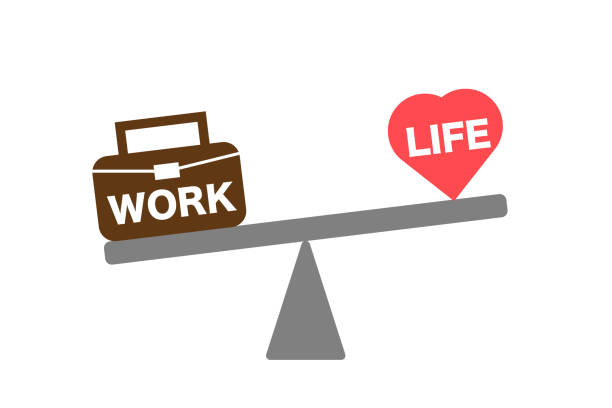Traveling while working can be a dream come true, especially for digital nomads or business travelers who have the flexibility to explore new destinations while keeping up with their professional responsibilities. However, balancing work and vacation isn’t always easy. Staying productive while traveling requires discipline, effective time management, and a strategy to avoid burnout. The good news is, with the right approach, you can successfully juggle work and leisure, ensuring that you remain efficient without missing out on your destination.
Here are some tips to help you stay productive while traveling, maintain a healthy work-life balance, and make the most of your time abroad.
1. Set Clear Boundaries for Work and Leisure
One of the most common challenges when traveling and working is maintaining a clear distinction between work time and vacation time. Without a clear boundary, you might find yourself either overworking and missing out on the destination, or letting distractions eat into your work hours.
How to Set Boundaries:
- Create a Flexible Schedule: Rather than working long hours in one go, break up your day into blocks. Set specific hours for focused work, and designate time for sightseeing and relaxation. For example, you might work in the morning and early afternoon and leave the late afternoon and evening for exploring.
- Set Daily Goals: Outline your tasks for the day, including meetings, deadlines, and essential work. Knowing exactly what you need to accomplish can help you stay on track and prevent procrastination, allowing you to enjoy the evening without worrying about unfinished work.
- Use Technology for Scheduling: Use tools like Google Calendar, Trello, or Asana to plan your days. Set reminders for meetings and deadlines, and be realistic about how much work you can do while traveling. Scheduling your work around local time zones or planning in advance can prevent overlap with personal time.
Tip: If you’re staying in a new time zone, adjust your work schedule to match peak productivity hours. You can start work early if you’re in a different time zone than your clients or team, allowing you to finish up before heading out to explore.
2. Find the Right Work Environment
Staying productive while traveling also depends on your work environment. Some digital nomads thrive in the bustle of coffee shops, while others need a quiet and organized workspace. Finding the right setting is essential for maintaining focus and being productive on the road.
Ideal Work Environments:
- Co-working Spaces: Many cities around the world have co-working spaces that cater specifically to digital nomads and business travelers. These spaces offer reliable Wi-Fi, office equipment, and a professional environment where you can work alongside other remote workers. They often include amenities like coffee, snacks, and meeting rooms, which make for a perfect productivity booster.
- Cafes and Libraries: If you’re not into co-working spaces, you can find a quiet café or a local library. Make sure they have reliable Wi-Fi and a peaceful atmosphere where you can focus. Choose a spot that’s comfortable and conducive to work, with fewer distractions.
- Airbnb or Hotel Workspace: If you’re staying in a private rental or a hotel, look for accommodations that provide a dedicated workspace, such as a desk or separate office area. Many hotels and Airbnb hosts offer amenities like a printer or comfortable seating for working.
Tip: Test your work environment before committing. If you’re unsure about the reliability of Wi-Fi or the level of noise in a café or co-working space, do a trial run to ensure it meets your needs.
3. Stay Connected with Your Team or Clients
Maintaining clear communication with your team, clients, or colleagues is key to staying productive and ensuring you don’t fall behind on your work while traveling. When you’re on the road, you might be dealing with different time zones, internet issues, or changing schedules, so it’s important to be proactive about staying connected.
How to Stay Connected:
- Leverage Communication Tools: Use collaboration tools like Slack, Microsoft Teams, or Zoom to stay in touch with your team. These platforms allow you to have meetings, share files, and chat in real time, no matter where you are. Having a reliable connection and communication tool ensures that you can stay on top of tasks and respond quickly to any work-related issues.
- Schedule Regular Check-ins: If you’re managing a team or working on a project with deadlines, schedule regular check-ins. These can be weekly meetings or daily quick huddles to ensure that work is progressing smoothly and that everyone is on the same page. Set expectations with your team about your availability, especially if you’re in a different time zone.
- Use Cloud Storage: To stay organized and accessible, store your documents, files, and work projects in the cloud using services like Google Drive, Dropbox, or OneDrive. This way, you can access your work from any location and avoid the stress of managing multiple devices or losing data.
Tip: Always check the local internet situation before booking accommodations. You want to make sure the Wi-Fi speed is fast enough for video calls, uploading files, or any work tasks that require a stable connection.
4. Embrace Time Management Techniques
When you’re working from a new location, it’s easy to get distracted by the excitement of your surroundings or the desire to explore. To ensure you stay productive, effective time management is crucial.
Productivity Tips:
- The Pomodoro Technique: This time management method involves working in short, focused intervals (typically 25 minutes), followed by a 5-minute break. After four intervals, take a longer 15-30 minute break. This technique can help you stay energized and focused without feeling overwhelmed by long work sessions.
- Time Blocking: Time blocking involves scheduling specific blocks of time for work, meetings, and personal activities. For example, you might block off 3 hours in the morning to work uninterrupted and then have the afternoon free for sightseeing. This helps you stay focused on the task at hand while also ensuring you don’t waste time trying to figure out when to do everything.
- Prioritize Tasks: Make sure you know which tasks are the most important. Whether it’s responding to emails, completing a project, or preparing for a meeting, prioritize your work so you’re handling the most pressing items first. Use task management tools like Trello or Todoist to keep track of what needs to be done and by when.
Tip: Try batching similar tasks together. For instance, schedule all your meetings in one block, allowing for uninterrupted work time before and after.
5. Balance Work with Sightseeing and Enjoying Your Destination
While it’s essential to remain productive, the beauty of traveling for work is the opportunity to enjoy new places. Be sure to plan time for sightseeing, relaxation, and enjoyment without compromising your professional obligations.
How to Balance Work and Leisure:
- Incorporate Local Culture into Your Day: If you’re working during the day, use the evenings or weekends to explore. You can visit local museums, take a sunset walk, or try a traditional meal. This gives you the chance to experience the destination without sacrificing work commitments.
- Weekend Escapes: If you’re traveling for work for an extended period, use your weekends to explore nearby towns or go on a short trip. Plan mini getaways around your work schedule, so you’re still able to enjoy the destination while maintaining productivity during the week.
- Take a “Staycation” Day: Every now and then, take a full day off to immerse yourself in the culture, relax, and recharge. Enjoy a leisurely day at a local park, visit historical landmarks, or simply enjoy a day of relaxation to ensure you don’t experience burnout.
Tip: Plan your sightseeing around your work schedule. For instance, if you’re working in the morning, plan shorter afternoon activities or evening explorations to avoid overloading yourself.
6. Practice Self-Care to Avoid Burnout
Working while traveling can be taxing on both your mind and body. To stay productive without getting burnt out, prioritize self-care during your travels.
How to Avoid Burnout:
- Maintain a Healthy Routine: Make sure to get enough sleep, stay hydrated, and eat healthy meals. Travel can disrupt your regular routine, so make an effort to maintain your health with exercise, balanced nutrition, and adequate rest.
- Stay Active: Incorporate physical activities into your day, like a morning run, yoga, or a walk around your new destination. This not only boosts your mood but also helps improve focus and productivity.
- Take Mental Breaks: Don’t feel guilty about stepping away from work for mental recharge. Whether it’s spending a few minutes meditating, reading a book, or taking a walk, these short breaks can refresh your mind and enhance your productivity.
Tip: Use apps like Headspace or Calm for short meditation breaks during the day to reset your energy levels.
Mastering the Work-Vacation Balance
Staying productive while traveling is all about striking the right balance. With the right planning, effective time management, and a clear distinction between work and leisure, you can make the most of both your job and your travels. By finding a good work environment, staying connected with clients or colleagues, and prioritizing self-care, you can enjoy your destination without sacrificing your professional goals. With a little discipline and smart planning, your work trips can become fulfilling experiences that enrich both your career and your sense of adventure.





